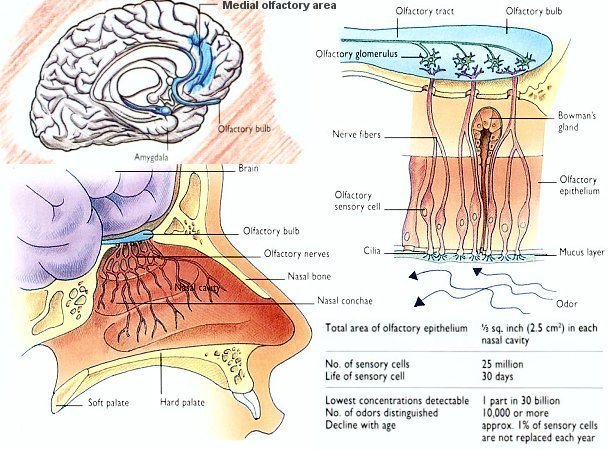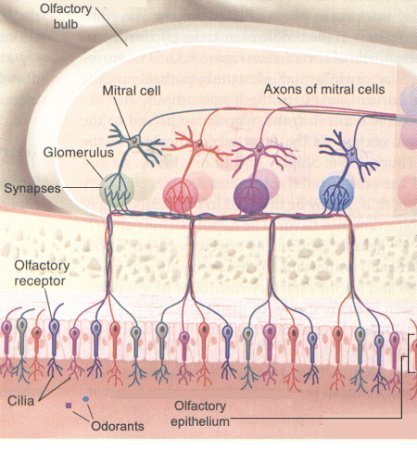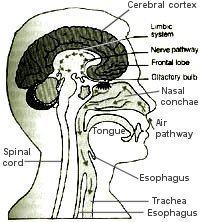Nerve Cells smell and taste
Chemicals in soap danger Fibromyalgia Myth Information on Nose smell TasteContents
neurons and Nervesneurotransmitter
The Brain & Spinal Cord
Cranial Nerves
Peripheral Nervous System
Autonomic Nervous System
Senses: Eye diagrams, Hearing, Smell, Taste, Taste & Tongue Sensation, Balance
Memory , Memory types, Creation of Memory,
Higher Functions
Altered States
-
Smell (see location of the
various components in Figure 09):
- Nasal cavity - This a large air space above and behind the nostril. Three shelf-like ridges of bone (nasal conchae) are there to deflect air. In normal breathing, air flows through the lower part of the cavity, past the rear of the soft palate and into the throat (Figure 16). A good sniff sends the odor eddying up into the roof of the nasal cavity, where it comes into contact with the olfactory apparatus.
- Mucus layer - Only those odor molecules that can be dissolved in the mucus, become the stimulants to the receptor sites on the cilia.
- Cilia - These are the hairlike projections from the olfactory sensory cells, and trigger the sensory cells to generate nerve signals if the receptors recognize the shape of the odor molecules. It is estimated that the human nose contains about 1000 different types of olfactory neurons, each type able to detect a particular set of chemicals.

Figure 16 Sense of Smell
[view large image]

Figure 17 Olfactory Bulb
[view large image]

Figure 18 Pathways [view large image]
The sense of taste and the sense of smell supplement each other, creating a combined effect when interpreted by the cerebral cortex. For example, some of the molecules may move from the nose down into the mouth region and stimulate the taste buds there. Therefore, part of what we refer to as smell actually may be taste.